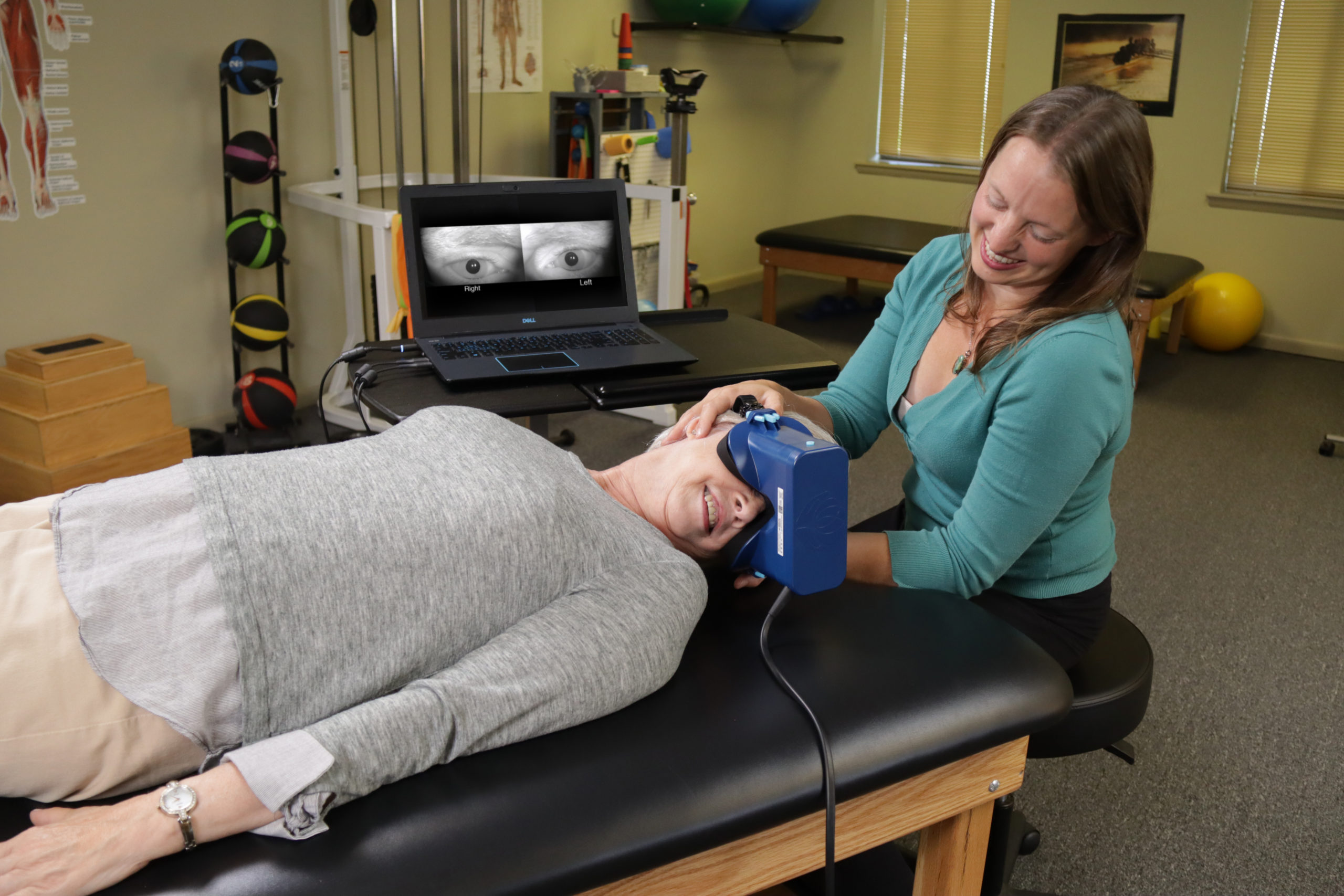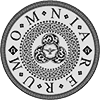VESTIBULAR FIRST
Infrared Video Goggles that revolutionise diagnosis of balance and eye disorders
Discover the power of Vestibular First Goggles—also known as Frenzel goggles or infrared goggles—used to diagnose balance and eye movement disorders. These advanced medical devices are essential tools for assessing conditions that affect coordination, eye movement, and equilibrium.
These Frenzel glasses use infrared technology to allow clinicians to observe involuntary eye movements (nystagmus) in complete darkness. This is critical for diagnosing conditions such as BPPV, Vestibular Neuritis, Meniere’s Disease, and Vertigo.

VESTIBULAR FIRST AT OMNIA IN LONDON
How Do Vestibular First Goggles Work?
Infrared Technology: The goggles use infrared light to track and record eye movements with high precision, capturing even subtle motions that are not visible to the naked eye.
Recording Eye Movements: Equipped with miniature infrared cameras positioned near the eyes, these video Frenzel goggles capture movements in response to visual stimuli, head motion, and positional changes.
Diagnostic Process: During assessments, patients wear the goggles while undergoing tests such as tracking moving objects or focusing on stationary targets. The vestibular goggles record the resulting eye movements for professional analysis.
Analysis and Diagnosis: The recorded data is reviewed to detect patterns or irregularities, assisting in diagnosing vestibular and ocular motor disorders such as nystagmus and gaze instability.
Prices
| Screening | Duration | Price |
|---|---|---|
| Vestibular First | 30 Minutes | £45 |
Conditions Diagnosed with Vestibular First Goggles
Benign Paroxysmal Positional Vertigo (BPPV): A common inner ear disorder marked by short episodes of vertigo triggered by changes in head position. Infrared video goggles can help diagnose specific BPPV types by tracking abnormal eye movements (nystagmus) during positional testing.
Vestibular Neuritis: This condition involves inflammation of the vestibular nerve, resulting in dizziness, imbalance, and vertigo. Infrared video goggles assist in tracking eye movements affected by the compromised vestibular system. system.
Meniere’s Disease: Characterised by recurrent vertigo, hearing loss, and tinnitus. Goggles help assess eye movement during and after episodes, aiding diagnosis.
Migraine-Associated Vertigo (MAV): Migraines may lead to vertigo and abnormal eye movements. Goggles help identify these patterns and support accurate diagnosis.
Central Nervous System Disorders: Conditions such as multiple sclerosis or brainstem tumours can cause abnormal eye movements. Infrared goggles aid in evaluation.
Ocular Motor Disorders: Used to assess disorders affecting eye coordination such as strabismus (crossed eyes) and congenital nystagmus.
Concussion and Traumatic Brain Injury: The goggles help monitor eye movement changes after concussions or TBIs.
Pre- and Post-Surgical Assessment: Used to evaluate eye coordination before and after surgery involving the vestibular or ocular motor systems.
Balance and Gait Disorders: Help clinicians understand how vestibular and visual input contribute to balance and walking, supporting tailored rehabilitation strategies.
At a Glance
Benign Paroxysmal Positional Vertigo (BPPV)
Vestibular Neuritis
Meniere’s Disease
Migraine-Associated Vertigo (MAV)
Central Nervous System Disorders
Ocular Motor Disorders
Concussion and Traumatic Brain Injury
Pre- and Post-Surgical Assessment
Balance and Gait Disorders
Duration
Screening & Consultation – 30 minutes
Vertigo Treatment at Omnia
We support individuals experiencing vertigo with a combination of acupuncture and physical therapy techniques. These aim to improve balance, reduce dizziness, and ease related symptoms. Our treatments address root causes like inner ear dysfunction, neck tension, or nervous system imbalances. While a full recovery cannot be guaranteed, many clients report significant relief and enhanced stability.
The Patient Journey
Online Booking: Visit our website and use our easy-to-use online booking system to schedule your appointment.
Phone Booking: Give us a call at 020 4515 0000, and our friendly team will assist you in booking a suitable time slot.
Email Booking: Send an email to info@omnialifestyle.co.uk, and our staff will respond promptly to confirm your appointment.
Arriving at the Clinic: When you arrive at our clinic, we want to ensure you feel welcomed and relaxed throughout your experience. Here’s what to expect:
Refreshments: You will be welcomed with complimentary water, tea, or coffee to help unwind and make your visit more enjoyable.
Free Parking: We offer free on-site parking facilities for your convenience, so you won’t have to worry about finding parking in the area.
Reception: Upon arrival, we will direct you to our reception area, where our welcoming staff will be ready to assist you.
Registration Form: We kindly request that you complete a registration form to provide us with essential details about your health, medical history, and any specific concerns you may have.
- The therapist will connect the goggles to a computer.
- Wear the goggles, making sure the lenses are aligned with your eyes.
- Adjust the head straps for a comfortable and secure fit.
- The goggles will start tracking your eye movements automatically.
- Be prepared for possible manoeuvres during this tracking process.
- Follow on-screen or therapist-guided instructions for specific eye movements.
- A trained therapist will analyse the recorded eye movements to assess dizziness causes.
- Based on the analysis, the therapist may recommend balance exercises or further consultation with a neurologist.
- Follow any additional instructions or recommendations from the therapist for best results.
FREQUENTLY ASKED QUESTIONS (FAQ)
Vestibular First is beneficial for individuals of all ages who experience vestibular disorders or issues related to balance and coordination. Whether the condition is recent or long-standing, the program can be tailored to address various levels of impairment.
The duration of the rehabilitation process with Vestibular First varies based on the severity of the condition and the individual’s response to treatment. Some people may experience improvements within a few weeks, while others might require several months of consistent effort.
No, Vestibular First is not a substitute for medical treatment. It is a complementary approach that works alongside medical interventions. Individuals with vestibular disorders should consult with their healthcare providers to determine the most appropriate course of action.
Yes, Vestibular First can contribute to fall prevention in older adults by enhancing balance, coordination, and overall vestibular function. This can help reduce the risk of falls, especially in individuals with vestibular disorders or age-related balance issues.

